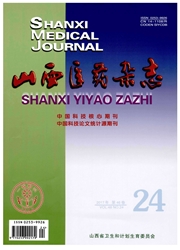

 中文摘要:
中文摘要:
目的 观察碘化N-正丁基氟哌啶醇(F2)对培养大鼠心肌细胞缺氧复氧(H/R)所致的损伤及早期生长反应蛋白-1(Egr-1)表达变化的影响。方法 制作心肌细胞H/R损伤模型。倒置显微镜和透射电子显微镜下观察心肌细胞一般形态、自发性搏动及超微结构的变化。采用免疫组织化学方法测定心肌细胞Egr-1蛋白阳性表达的细胞数。结果 H/R造成心肌细胞形态异常、搏动节律紊乱,导致超微结构损害;H/R诱导心肌细胞Ear-1表达明显增强。缺氧及复氧前给予F2则能改善H/R所致心肌细胞病理损害,抑制心肌细胞Egr-1的过量表达。结论 F2对培养心肌细胞H/R损伤具有保护作用,这可能与其抑制Egr-1蛋白过量表达有关。
 英文摘要:
英文摘要:
Objective To investigate the relationship between the protective effects of N-n-butyl haloperidol iodide (F2) on hypoxia/reoxygenation (H/R) injury and the expression of early growth response (Egr-1) in cultured rat cardiomyocytes. Methods The H/R models of neonatal rat cardiomyocytes were established. The damages of morphology, spontaneous beat and ultrastructure of cardiomyocytes were detected by inverted microscope and transmission electron microscope.The numbers of Egr-l-immunopositive cell were counted by immunohistochemistry. Results H/R caused cultured cardiomycyte paramorphia, arrhythmic beat and ultrastructural damage. H/R induced strong expression of Egr-1 in cardiomycytes. Treatment with F2 before hypoxia and reoxygenation significantly attenuated the cardiomyocytes injury and inhibited the overexpression of Egr-1 after H/R. Conclusion F2 can protect cultured cardiomycytes from H/R injury,which might be associated with the inhibition of Egr-1 overexpression.
 同期刊论文项目
同期刊论文项目
 同项目期刊论文
同项目期刊论文
 期刊信息
期刊信息
